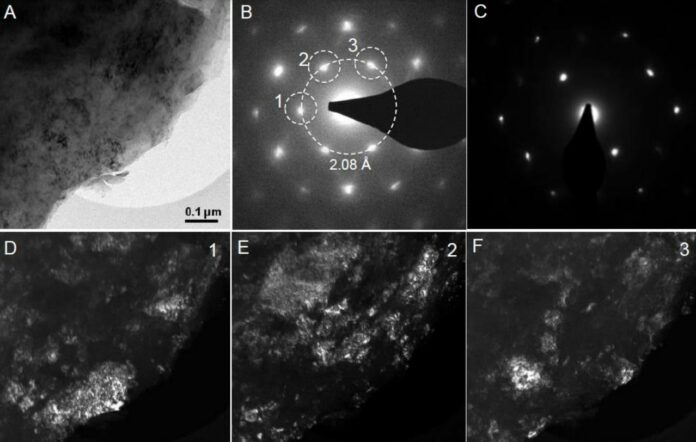Lonsdaleite is named after Dame Kathleen Lonsdale, a well-known British crystallographer who was the first woman to become a Fellow of the Royal Society.
Scientists believe that the strange diamonds from an old dwarf planet in our solar system may have originated soon after the dwarf planet struck a big asteroid around 4.5 billion years ago.
Researchers claim to have found lonsdaleite, a rare hexagonal type of diamond, in ureilite meteorites originating in the mantle of the dwarf planet.
Lonsdaleite is named after Dame Kathleen Lonsdale, a well-known British crystallographer who was the first woman to become a Fellow of the Royal Society.
The team, which included researchers from Plymouth University, Monash University, RMIT University, CSIRO, and the Australian Synchrotron, discovered evidence of how lonsdaleite evolved in ureilite meteorites and reported their findings in the Proceedings of the National Academy of Sciences (PNAS). Professor Andy Tomkins, a geologist at Monash University, oversaw the investigation.
RMIT Professor Dougal McCulloch, one of the senior academics involved, said the team hypothesized that the hexagonal shape of the atoms in lonsdaleite would make it possibly harder than cubic-structured normal diamonds.
According to McCulloch, director of the RMIT Microscopy and Microanalysis Facility, “this study categorically shows that lonsdaleite exists in nature.”
“We have also discovered the largest lonsdaleite crystals known to date that are up to a micron in size – much, much thinner than a human hair.”
The team says that the strange structure of lonsdaleite could help them come up with new ways to make ultra-hard materials that can be used in mining.
What’s the story behind these weird diamonds?
McCulloch and his RMIT team, which included Alan Salek, a PhD student, and Dr. Matthew Field, a doctor, used advanced electron microscopy to take slices of solid, whole pieces of meteorites to show how lonsdaleite and regular diamonds formed.
“There’s strong evidence that there’s a newly discovered formation process for the lonsdaleite and regular diamond, which,” according to McCulloch, “is like a supercritical chemical vapour deposition process that has taken place in these space rocks, probably in the dwarf planet shortly after a catastrophic collision.”
“Chemical vapour deposition is one of the ways that people make diamonds in the lab, essentially by growing them in a specialised chamber.”
The team’s theory, according to Tomkins, is that the lonsdaleite in the meteorites developed from a supercritical fluid at high temperatures and moderate pressures, nearly precisely preserving the shape and texturing of the original graphite.
Later, as the environment cooled and the pressure dropped, Tomkins, an ARC Future Fellow at Monash University’s School of Earth, Atmosphere and Environment, explained, “lonsdaleite was partially replaced by diamond.”
“Nature has thus provided us with a process to try and replicate in industry. We think that lonsdaleite could be used to make tiny, ultra-hard machine parts if we can develop an industrial process that promotes replacement of pre-shaped graphite parts by lonsdaleite.”
The development of the carbon phases in ureilites has long been a mystery, according to Tomkins, but the study’s findings have shed some light on it.
Image Credit: Getty
You were reading: New Findings: How Lonsdaleite Formed In Ureilite Meteorites
